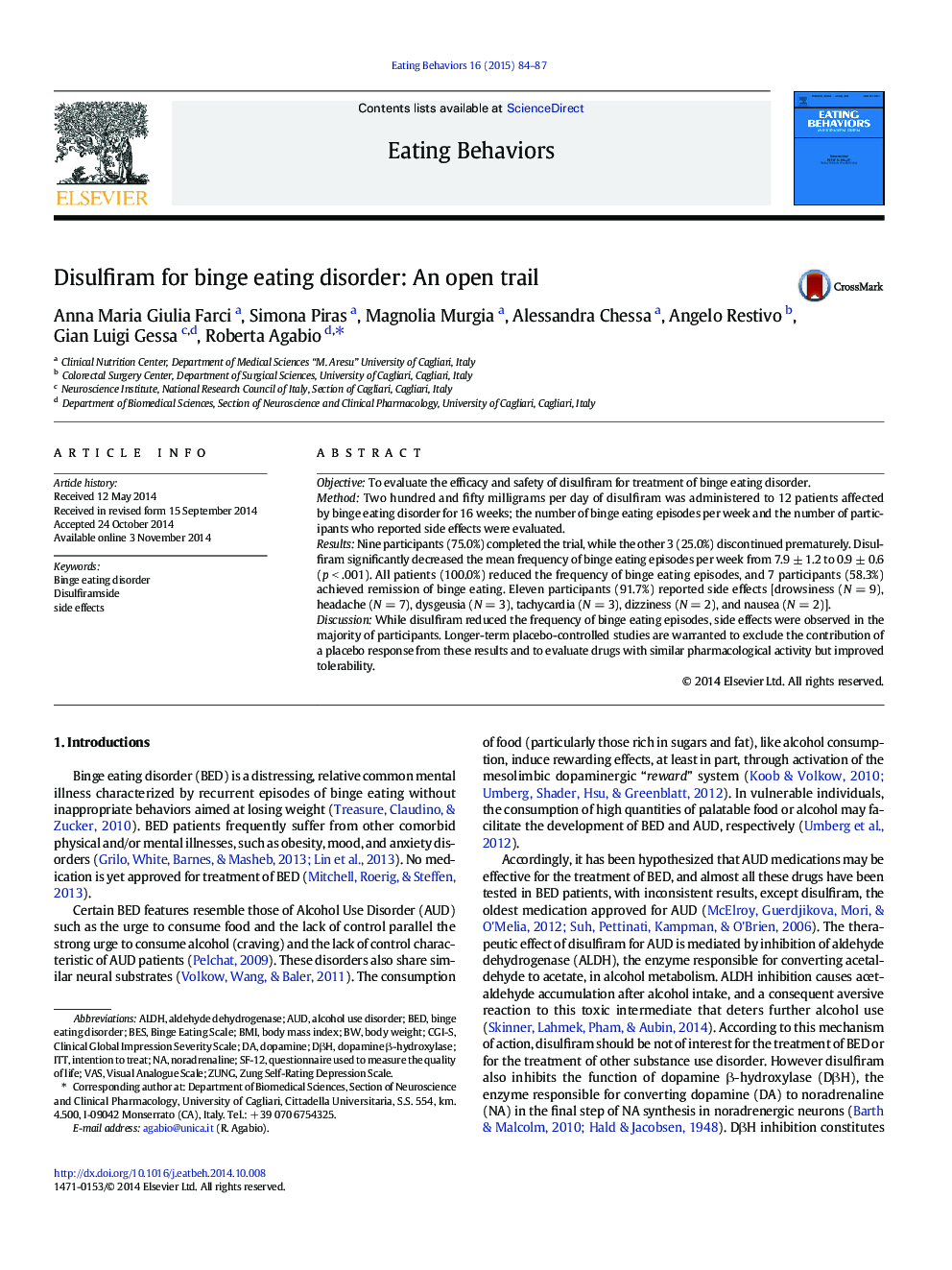| کد مقاله | کد نشریه | سال انتشار | مقاله انگلیسی | نسخه تمام متن |
|---|---|---|---|---|
| 906542 | 1472887 | 2015 | 4 صفحه PDF | دانلود رایگان |

• Binge eating disorder (BED) and alcohol use disorder (AUD) have similar features.
• Disulfiram, an AUD medication, may be effective in the treatment of BED patients.
• Disulfiram reduced the frequency of binge eating episodes in 12 BED patients.
• Disulfiram induced side effects in the majority of BED patients.
• Disulfiram may be useful for BED patients but its use is limited by side effects.
ObjectiveTo evaluate the efficacy and safety of disulfiram for treatment of binge eating disorder.MethodTwo hundred and fifty milligrams per day of disulfiram was administered to 12 patients affected by binge eating disorder for 16 weeks; the number of binge eating episodes per week and the number of participants who reported side effects were evaluated.ResultsNine participants (75.0%) completed the trial, while the other 3 (25.0%) discontinued prematurely. Disulfiram significantly decreased the mean frequency of binge eating episodes per week from 7.9 ± 1.2 to 0.9 ± 0.6 (p < .001). All patients (100.0%) reduced the frequency of binge eating episodes, and 7 participants (58.3%) achieved remission of binge eating. Eleven participants (91.7%) reported side effects [drowsiness (N = 9), headache (N = 7), dysgeusia (N = 3), tachycardia (N = 3), dizziness (N = 2), and nausea (N = 2)].DiscussionWhile disulfiram reduced the frequency of binge eating episodes, side effects were observed in the majority of participants. Longer-term placebo-controlled studies are warranted to exclude the contribution of a placebo response from these results and to evaluate drugs with similar pharmacological activity but improved tolerability.
Journal: Eating Behaviors - Volume 16, January 2015, Pages 84–87